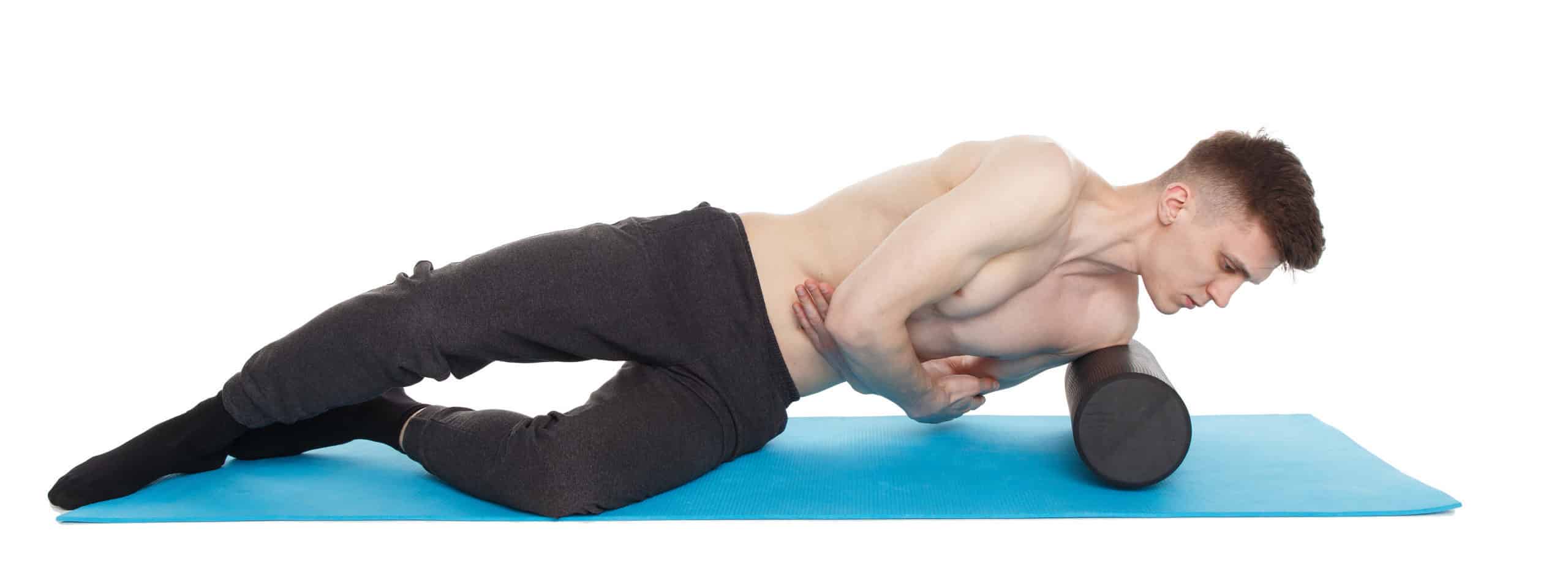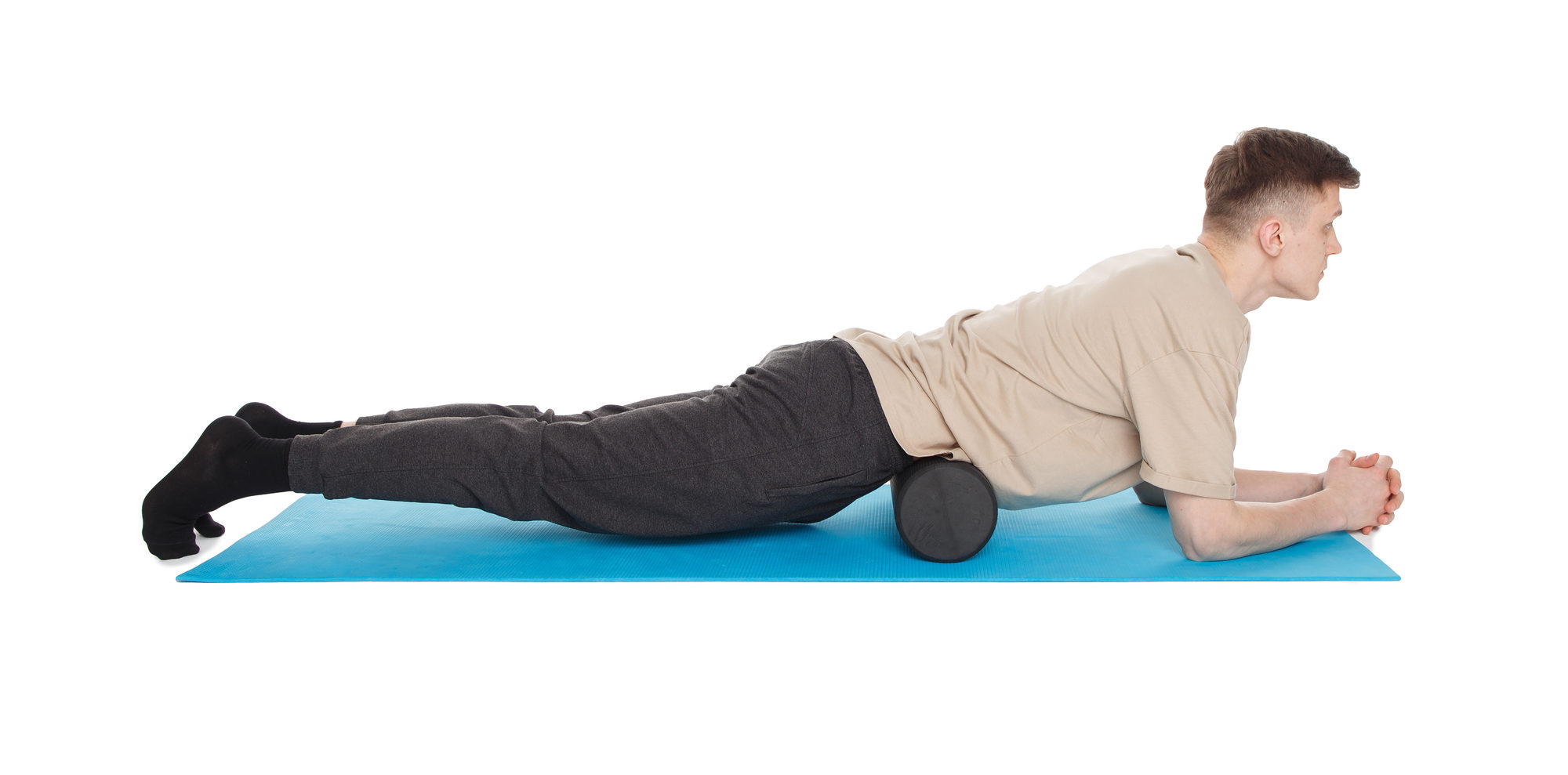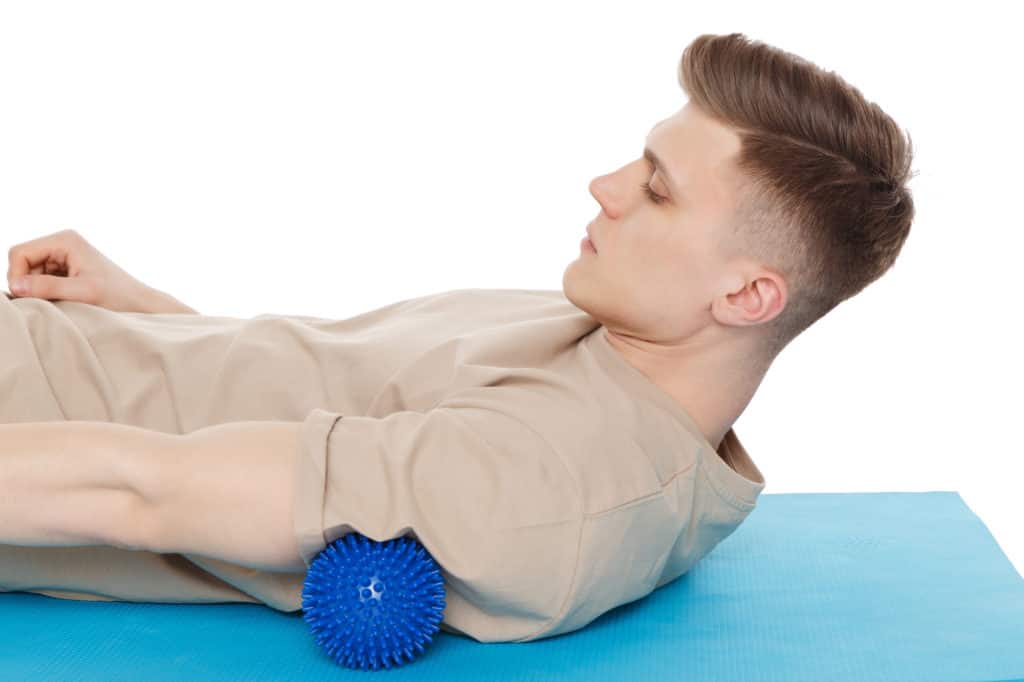 Have you seen people frantically rolling around on the floor using foam rollers and talking about ‘Self-Myofascial Release’?
Have you seen people frantically rolling around on the floor using foam rollers and talking about ‘Self-Myofascial Release’?
It’s a miracle if you haven’t. It seems to be a current viral trend right now.
Aggressively rubbing tight muscles with foam rollers – before and after a heavy workout – has become the latest “fitspo” trend. It’s all over Instagram, and YouTube, performed by people who have no idea what they’re doing.
Personal trainers, fitness models, and Instagram influencers (affiliated with foam roller manufacturers) all tout the benefits of the so-called “Self-Myofascial Release.”
They have the right idea. It’s done under the guise of health, better recovery, and more “gains.” But, in most cases, these people do (and promote) more harm than good.
This type of manic rolling is not self-myofascial release. They’re using the wrong equipment, targeting the wrong areas of the body, going too fast or too hard, and ultimately not releasing anything. The basic idea is to “break up” or “dig through” the stuck and thickened tissues and muscles.
In fact, because of this approach, the opposite of “release” happens – their muscles and potential restrictions in their myofascia become tighter and thicker, which eventually causes more pain, stiffness, bad posture, poor sleep, and delayed recovery. It’s a bit insidious, really, because initially things feel looser and better. But the body doesn’t appreciate being forced and it will thicken and tighten up again against the next time.
The trick to feeling the long term (as opposed to the YouTube short term) positive, feel-good benefits, which are most definitely possible to achieve at home, is technique – although we cannot teach you effective Self-Myofascial Release in a blog post. So, please only consider this blog post as the tool for highlighting the foundations of Self-Myofascial Release.
After all, without hands-on feedback, how can you tell if you are getting the right feel of it?
Quite simply, you can’t.
By following an online video as a tutorial, you will push too hard and do little to help yourself. There’s the real risk of injury, too. And it’s the worst kind of injury – one where you weren’t gaining anything in the first place. At best, you would be doing soft tissue mobilization; which is not true Myofascial Release.
When done properly, Self-Myofascial Release can be a valuable part of your wellness routine – to keep your body fit, healthy, mobile, and functioning well. Even this only goes so far, however. It doesn’t replace the need for professional Myofascial Release Therapy – where we’re able to work at a much deeper level.
The old saying, “If you want something done properly, do it yourself,” doesn’t apply here. (Does it truly, anywhere? I wonder about that one…) Instead, please do check in with the professionals; Find a Myofascial Release Therapist. The results can be revolutionary:
✓ Treat chronic pain, headaches, migraines, tinnitus, and many other conditions
✓ Increase blood flow and oxygen to your joints, muscles, and connective tissue
✓ Reduce stress and promote full-body relaxation
✓ Activate the parasympathetic nervous system (stretch & relax/rest & digest)
✓ Improve recovery and increase performance in the gym or on the field
✓ Correct one-sided muscle imbalances and posture problems
✓ Relieve stress on the joints
✓ Reduce scar tissue and internal adhesions after injuries or surgery
We offer free 30-minute telephone consultations or a discovery visit at our Utah clinic if you’re interested in exploring this treatment further.
However, if Myofascial Release Therapy is not on the table for you right now, or you want to support your in-clinic results with a home practice, which we definitely recommend, self-myofascial release done right can be worthwhile.
Research studies confirm, “A home program, consisting of ischemic pressure and sustained stretching, was shown to be effective in reducing TP (trigger point) sensitivity and pain intensity in individuals with neck and upper back pain.”
Here’s our guide to how to do it properly.
Self-Myofascial Release: What Do You Need To Know?

What is Myofascial Release?
This hands-on therapy targets the three dimensional web of connective tissue surrounding everything in your body, from your muscles and skin to internal organs, bones, ligaments, and tendons. Over time, and in response to injury, illness, or inflammation, these fibrous tissues become tight, shortened, and dehydrated, which causes painful restrictions to form.
Myofascial Release aims to relax, stretch, and dissolve these restrictions to increase blood flow, reduce inflammation, and aid recovery. It’s helpful for post-workout recovery or as part of a daily mobility routine.
It is also used for chronic pain disorders, commonly referred to as myofascial pain syndrome or fibromyalgia. It does this by helping to melt away trigger points and restrictions in the fascia caused by stress, environmental toxins, lifestyle factors, and trauma and supporting the body to heal itself.
What is self-myofascial release?
With self-myofascial release, you achieve the benefits by using a foam roller or a particular massage ball to treat yourself. As we mentioned, it’s usually not as effective as working with a trained therapist. But it is beneficial and can be used to help maintain muscle and tissue flexibility.
Self-myofascial release is safe if you take it slow and you’re not too aggressive. You can enjoy all the benefits with gentle, sustained pressure, which allows your connective tissue to relax and expand slowly. Overworking and tensing your muscles is what probably caused your issues in the first place, so try not to push or rush the healing process.
*If you’re in acute pain, however, do not use Self-Myofascial Release. Contact a Myofascial Release Therapist, a Physical Therapist, or your family Physician to have the pain evaluated and rule out serious injury.
Can I Perform Self-Myofascial Release?

Before we go further and describe these exercises, I want to point out that we don’t consider them “true” myofascial release. These are part of what we call soft tissue mobilization and are a useful component of a more thorough myofascial release approach. This is a beginning point only.
The exercises that are about to be described outline only what is currently being taught to an internet-wide audience. These exercises may work for some, but it remains popular wisdom that these activities don’t always suit.
That conclusion comes from experience, and not from assumption. Many of the people we see in our clinic have been trying to ‘help themselves’ with self-myofascial release videos and it’s not enough. It’s common to find that they have actually worsened from following the advice given by online ‘influencers’. Gentle and mild discomfort are good guidelines for the soft tissue mobilization described here. But this is not, again, true Myofascial Release.
And with that, what can we tell you?
First, identify any tight, sore spots in your body – areas stiffer than usual and feel painful when pressed. You can usually feel tight bands of connective tissue around these spots. You may also notice some mild inflammation or swelling around the area. Don’t press too hard, as this may it aggravate further. Just make a mental note of all the places you want to “release.”
You will need a firm foam roller to perform these exercises, or if you prefer, adapt them to use a massage ball. But we’ve written them with a foam roller in mind. Foam rollers are available in most major sports retailers, on Amazon, or direct from your Physical Therapist or Myofascial Release Therapist.
Keep your core tight to support your lower back and the rest of your body
You only need to perform each exercise for 1-2 minutes – less is more.
When you roll over a sore point, hold with gentle pressure for 30 seconds
Breathe deeply and relax into each exercise – to allow your connective tissue to do the same.
Even if you only have stiffness and discomfort in one area of your body. We recommend you perform a daily whole-body routine of self-myofascial release to keep your entire body flexible, mobile, and performing at its best.
These five exercises are commonly explained by influencers in search of followers:
Upper Back
Cross your arms across your chest or put your hands behind your head – as if you were going to do an abdominal crunch. Then lie your back against the foam roller. Carefully lift the hips and with gentle pressure, roll up and down the mid-section of your back. Roll gently over this area for 1-2 minutes before swapping to the other side. If you roll over a tender spot, hold and sustain gentle pressure for 30-45 seconds or until the pain decreases by 25%—swap sides.
Adductor (Inner Thigh)
Lie face-down on the floor with your legs outstretched.
Extend one of your legs out to the side, slightly, and place your foam roller in the groin. Roll gently over this area for 1-2 minutes before swapping to the other side. If you roll over a tender spot, hold and sustain gentle pressure for 30-45 seconds or until the pain decreases by 25%.
Iliotibial Band
This one is a little trickier to get right. Your Iliotibial band is a thick strip of connective tissue that runs from your hip to your shin bone via the knee. It can be the source of a multitude of pain and mobility problems. If your iliotibial band is tight, it can be aggravated as it rubs against the thigh bone.
To perform self-myofascial release on the iliotibial band:
Lie on your side with the foam roller positioned underneath you – just below the hip.
Keep your head, and the rest of your body straight and roll gently from just below your hip bone to the outer edge of the knee.
Roll gently over this area for 1-2 minutes before swapping to the other side. If you roll over a tender spot, hold and sustain gentle pressure for 30-45 seconds or until the pain decreases by 25%—swap sides.
Hamstrings
Sit on the floor with your legs outstretched. Place the foam roller underneath your thighs, then raise your hips off the floor – using your hands on the floor behind you for support. Roll back and forwards, gently, so the roller moves from your knee up to the outer edge of your hip. Roll gently over this area for 1-2 minutes before swapping to the other side. If you roll over a tender spot, hold and sustain gentle pressure for 30-45 seconds or until the pain decreases by 25%—swap sides.
Quadriceps
Lie face down on the floor and put the foam roller underneath the front of your thighs. Keep your glutes and core engaged to prevent lower back injury. When you’re in position, gently roll from your knee to your pelvis – focusing on the outer edge of your thigh. Roll gently over this area for 1-2 minutes before swapping to the other side. If you roll over a tender spot, hold and sustain gentle pressure for 30-45 seconds or until the pain decreases by 25%—swap sides.
*If you feel pain, which is anything more than gentle discomfort while performing these exercises, stop immediately.
If this all feels a bit overwhelming, then we can help. You don’t need to perform these activities by yourself. Our therapists are experts in administering myofascial release and take the time to get to know you, helping to create a custom package destined to get you back on your feet. You would be in good hands!
Want to learn more about Myofascial Release Therapy? Get in touch with us anytime through our contact page.

